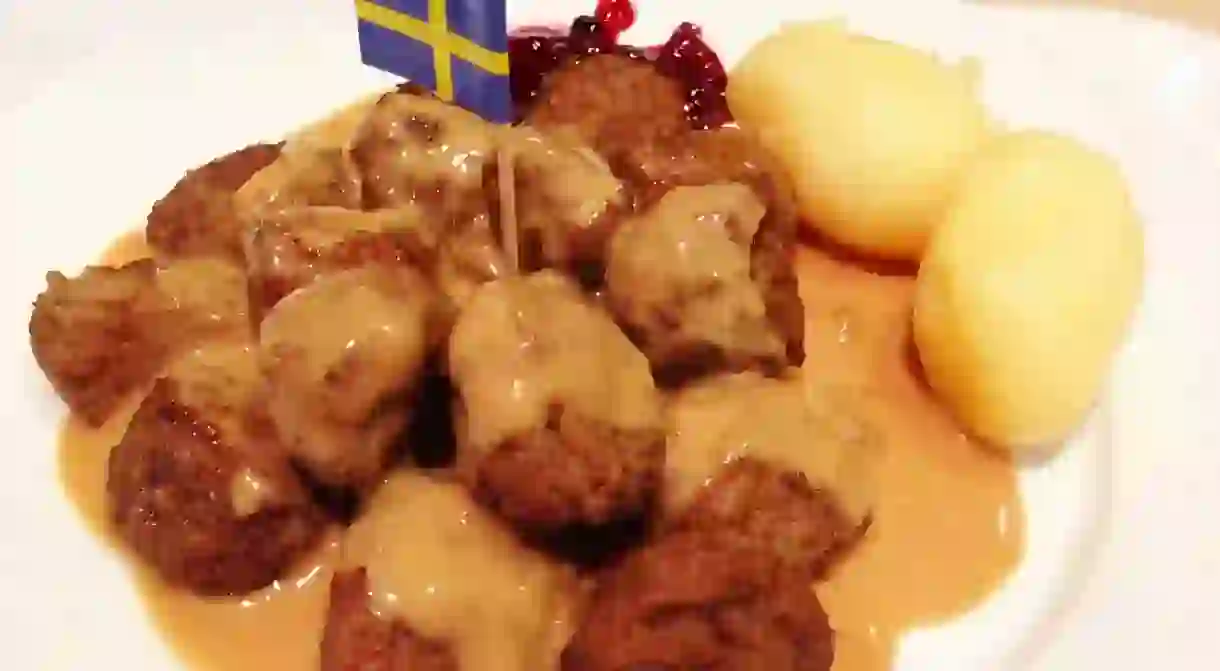Food Wars: Are Swedish Meatballs Actually From Turkey?

A tweet from Sweden’s official Twitter account has the nation’s people in shock. It recently revealed that Swedish meatballs, the country’s national dish, actually originated from Turkey. Is this really true?
The tweet said, ‘Swedish meatballs are actually based on a recipe King Charles XII brought home from Turkey in the early 18th century. Let’s stick to the facts!’
The famous Swedish dish – known as Svenska köttbullar in Swedish – is composed of pan-fried meatballs traditionally served with gravy and lingonberry sauce. Turns out, it’s very similar to Turkey’s iconic köfte (meatballs).

Twitterati reactions
Reactions to the tweet were, of course, on the cheeky side.
My whole life has been a lie https://t.co/tVcRmJx5By
— @sweden / Örjan (@sweden) April 28, 2018
“There must have been a reason why the Turkish people embraced something from Sweden so willingly. Ikea equals meatballs for many of us.” https://t.co/ZVIPReJIW2
— Christopher (@chrissmith58102) May 1, 2018
But it’s IKEA that seems to be facing the brunt of this revelation.
Time to un-appropriate your staple menu item Ikea. I expect a full apology and possibly reparations for all “Swedish” Meatballs sold, to the Turkish people. https://t.co/52WNDDsp9q
— Andy 🔪🥦 (@StenosPosition) May 1, 2018
Although in IKEA’s defence, the two meatball recipes are quite different. While Swedish meatballs are served with gravy and lingonberry sauce, the Turkish köfte is often served with piyaz (a white bean vinaigrette salad), turşu (pickled vegetables) and bulgur.
Origins of the Swedish meatball
According to historical facts stated by Annie Mattson of Sweden’s Uppsala University, it was King Charles XII (who reigned Sweden from 1697 to 1718) who brought the recipe from Istanbul. After having lost a military battle against the Russians, the king was exiled near Bender, Moldova for five years in the early 1700s, which was part of the Ottoman Empire during that time. Turkish media outlets also claim that the king, who used food as a means of boosting good relations between countries, also brought back coffee and stuffed cabbage from Istanbul. Sultan Ahmed III, the Ottoman sultan of the time, also purchased and freed Swedish women and children who were taken by the Russians, which also bolstered the already good relationship between Sweden and Turkey.

Origins of köfte
As for the history of the Turkish köfte, the meatball recipe is believed to have come from the Imperial Kitchen of the Ottoman Empire. In a 15th-century recipe book, the meatball is referred to by its Farsi name, kûfte, which means beaten and crushed. Through the centuries, kûfte became köfte and took on many shapes, including different soups with köfte, köfte served with different sauces, köfte kebabs, köfte dipped in batter and fried and köfte made from other ingredients such as fish, bulgur, chicken, vegetables and other legumes.













